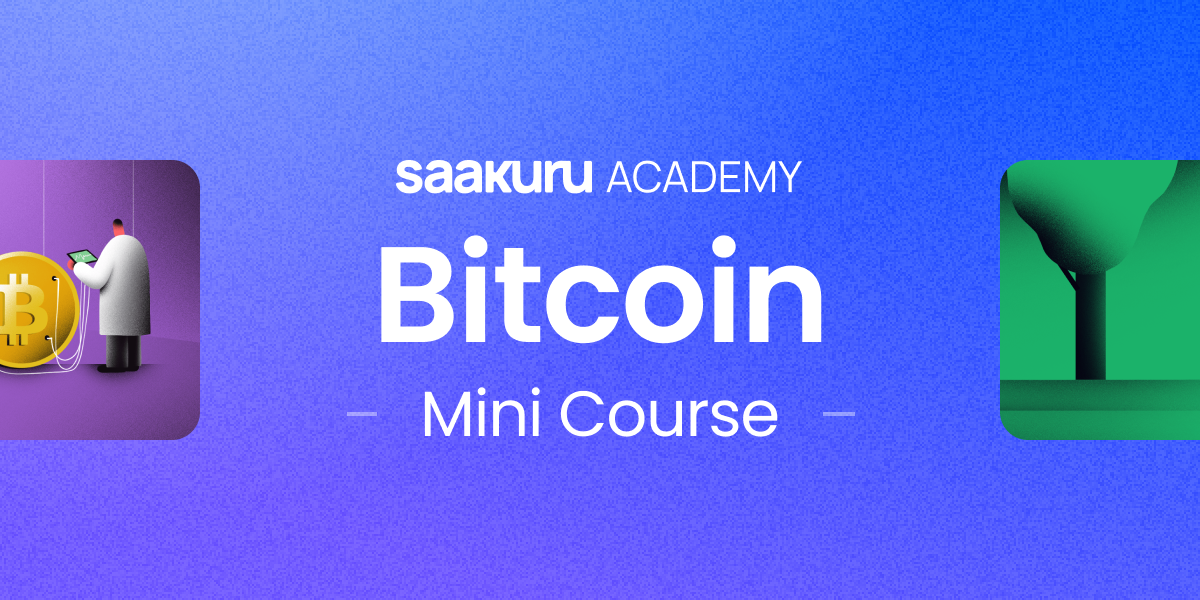
What are proof-of-burn (PoB) and proof-of-weight (PoWeight)?
Proof-of-burn (PoB) and proof-of-weight (PoWeight) are two consensus algorithms used within the blockchain industry to achieve agreement, or consensus, among network participants. PoB was created as a much more efficient and less intensive alternative to proof-of-work (PoW), which relies on powerful hardware that is expensive to acquire and run.
In this AAG Academy guide, we’ll explain proof-of-burn in detail, including how it works, and look at how PoB compares to proof-of-weight. We will also cover its pros and cons, and answer some common questions about the PoB algorithm.
What is proof-of-burn (PoB)?
PoB, which is short for proof-of-burn, is a consensus mechanism designed around “burning” cryptocurrency. Rather than relying on powerful and costly computer hardware to solve complex cryptographic puzzles like PoW, PoB relies on virtual hardware instead. Miners burn coins to acquire a virtual mining rig, which allows them to mine new blocks and validate transactions.
Although there is more than one version of PoB in use today, the original concept was first proposed by Iain Stewart in the Bitcointalk forum in 2012. The first cryptocurrency to implement PoB was Slimcoin, a Bitcoin alternative, and it is currently the only established network using the PoB algorithm today.
How does proof-of-burn work?
As we touched on above, proof-of-burn is developed around the concept of acquiring virtual mining hardware in exchange for cryptocurrency. To begin with, miners send coins to an address where they can be verified but never used. These may be coins issued by the network itself (its native currency), or third-party coins, like Bitcoin, depending on the implementation.
Once coins have been sent to a randomly generated “eater address,” they are essentially burned and can not be retrieved. However, in return for their deposit, miners receive a block reward and the opportunity to validate new blocks. The more coins a miner burns, the more power they can obtain, and therefore the greater the number of blocks they can process.
The coin deposit system makes PoB somewhat similar to proof-of-stake (PoS), but whereas PoS stakers can recover their tokens at any time after the initial lock-in period has passed, those who put coins into PoB cannot get them back. This gives PoB participants an even greater incentive to act honestly in pursuit of block rewards.
Pros and cons of proof-of-burn
One of the biggest advantages to PoB is that it is incredibly efficient. It requires minimal power and very little computational resources unlike PoW, and is therefore much kinder to the environment. In fact, miners don’t need to operate a node of any kind; they simply need to invest their crypto coins to take part. This makes PoB networks much more accessible.
In addition, the burning process of PoB reduces the circulating supply of the network’s native currency, thereby increasing its scarcity. Over time, this can help a coin achieve a steadier value, which mostly increases rather than decreases. As is always the case with cryptocurrency, however, there will always be dips in value from time to time.
One of the biggest downsides to PoB is that some implementations rely heavily on Bitcoin, which is created using the PoW consensus algorithm and completely defeats the primary purpose of PoB. What’s more, PoB is still very much in its infancy, despite the fact that it is a decade old now, and it is yet to be tested on larger networks.
Proof-of-burn vs. proof-of-weight (PoWeight)
Proof-of-weight (PoWeight) is another consensus mechanism that is sometimes centered around the use of coins and tokens, but it does not involve burning. Instead, in PoWeight, potential miners are given a “weight” based on the amount of cryptocurrency they hold, or other factors. The more coins their wallet contains, the greater their weight, and vice-versa.
Whenever a new transaction occurs on the network, a committee of random members is created and their weights are assigned. The “heaviest” participants have a greater chance of being chosen to validate new blocks and then collect the reward for doing so.
One important thing to note about PoWeight is that it is not a single consensus algorithm, but rather an umbrella term for a variety of different methods based on the Algorand consensus model. As we mentioned above, not all implementations assign weights based on the number of coins held; some use other “weighted factors” instead.
For instance, the Filecoin blockchain, which was one of the first to adopt PoWeight in 2017, gives users their weighted value based on how much data they are storing. This makes PoWeight incredibly flexible and scalable, and allows it to be used by all kinds of blockchain networks.
References
- Proof burn cryptocurrency
- Proof of burn explained
- Proof of burn consensus algorithm in blockchain
- Proof of weight pow consensus mechanism in blockchain
Frequently Asked Questions
The proof-of-burn (PoB) protocol allows network participants to “burn” their cryptocurrency coins to take part in the mining process and collect rewards. It is much more efficient than proof-of-work (PoW), but it is yet to be tested on larger blockchain networks.
Slimcoin is one of the first and best-known blockchains that uses the proof-of-burn consensus algorithm.
Other than Slimcoin, no other cryptocurrency uses PoB as things stand. TGCoin, or Third Generation Coin, a Bitcoin alternative, planned to use PoB when it launched in 2014, but it is no longer in operation.
There are lots of blockchain consensus algorithms in use today alongside PoW, PoS, PoB, and PoWeight. See our in-depth guide to consensus algorithms to find out more.
Disclaimer
This article is intended to provide generalized information designed to educate a broad segment of the public; it does not give personalized investment, legal, or other business and professional advice. Before taking any action, you should always consult with your own financial, legal, tax, investment, or other professional for advice on matters that affect you and/or your business.
Get news first
Be the first to get our newsletter full of company, product updates as well as market news.

















